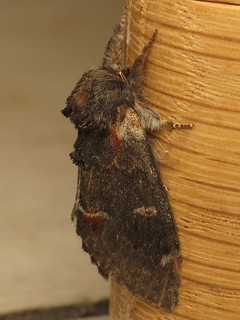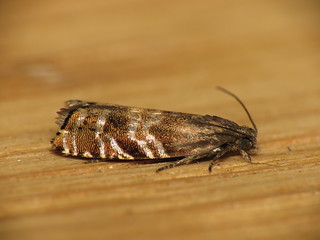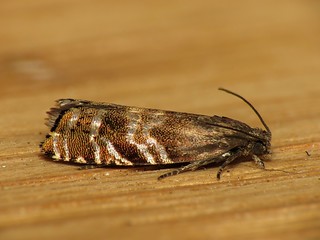Focus stacking
Spent some time yesterday with CombineZP to stack series of images of live moths to create compound images with greater depth of focus than any of the individual images.
I used a tripod with a Canon SX40 HS mounted on a slider rail and fitted with a Raynox DCR-250 snap-on super macro lens to take series of photos of different moths across the full range of focal distances that intersected the moth. In each case I used the camera's internal flash diffused with a collapsible flash diffuser and a 10-second shutter delay.
I've created three composite pictures. In each case it was much more effective to include only the smallest possible range of images that encompassed the whole moth. With Cydia strobilella, I had to exclude some of the photographs that showed additional sections of the left antenna since the position of the antenna changed between images.
For comparison, here is the best single-shot image I managed of each moth, followed by the best composite I could create.
Swammerdamia caesiella
Notodonta dromedarius
Composite (7 images - black background not planned):

Cydia strobilella












Σχόλια
Προσθήκη σχόλιου